Integral tan^2(x)sec(x)powers of secant and tangent Integral tan^2(x)sec(x)powers of secant and tangent{eq}(\sec x 1)(\sec x 1) = \tan^2x {/eq} (Our given) {eq}\sec^2 x 1 = \tan^2x {/eq} (We multiply the expressions on the left using FOIL) {eq}1\tan^2 x 1 = \tan^2x {/eq}There appears to be an ambiguity in the question that can be read in two ways We will accordingly solve the integral for both the possibilities Let I = ∫ (1/tanx) cosec x cot x sec x dx We know that integral of sum of functions equals sum of integrals of the functions taken separately ∴ I = ∫(1/tanx) dx ∫cosec x dx ∫

2 Cot 4x 2 Tan X Sec X X2 Cos 2x 1 Sin X Cos X Tan 4 3x Cos 2x F X X Cos X 2 Acirc Euro Rdquo Cos Pdf Document
Tan^2x=1-secx
Tan^2x=1-secx-\\int \tan^{2}x\sec{x} \, dx\ > < Get an answer for 'Prove the identity `tanx/(secx1) = (secx1)/tanx`' and find homework help for other Math questions at eNotes



What Is The Integration Of Tan 2x Solution Quora
Solve cos x1 = sin^2 x Find all solutions on the interval 0,2pi) a x=pi, x=pi/2, x = Find all solutions of the equation on the interval 0,2pi) Tan^2x=1secx each equation in the interval x E 0,2 pi sin^2x 3/4 = 0 *3/4 is a fraction 2tSolve and name all the solutions of x tan^2xsecx=1 *** LCDcos^2 (x) 2cos^2 (x)cos (x)1=0 2cos (x)1) (cos (x)1)=0Separate fractions Rewrite tan(x) tan ( x) in terms of sines and cosines Multiply by the reciprocal of the fraction to divide by sin(x) cos(x) sin ( x) cos ( x) Convert from cos(x) sin(x) cos ( x) sin ( x) to cot(x) cot ( x) Divide sec2(x) sec 2 ( x) by 1 1 Rewrite sec(x) sec (
The distance between 0 0 and 1 1 is 1 1 Divide 2 π 2 π by 1 1 The period of the sec ( x) sec ( x) function is 2 π 2 π so values will repeat every 2 π 2 π radians in both directions The final solution is all the values that make (tan(x)−1)(sec(x)− 1) = 0 ( tan ( x) 1) ( sec ( x) 1) = 0 trueSee explanation Starting from cos^2(x) sin^2(x) = 1 Divide both sides by cos^2(x) to get cos^2(x)/cos^2(x) sin^2(x)/cos^2(x) = 1/cos^2(x) which simplifies to 1tan^2(x) = sec^2(x)Integral of sec^3x https//wwwyoutubecom/watch?v=6XlSP58uisintegral of sec(x) https//wwwyoutubecom/watch?v=CChsIOlNAB8integral of tan^2x*secxintegral
1)Solve this sytem of equations by graphing 2x3y=12 xy=1 2)Find the solution to the following system of equations, by using the subtraction method Problem 1 x3y=7 4x3y=1 Problem 2 2xy=7 3x4y=6 Problem3 1/2x 2/3y=1 1/3x y=1Prove the following identities 1 1cosx/1cosx = secx 1/secx 1 2 (tanx cotx)^2=sec^2x csc^2x 3 cos(xy) cos(xy)= cos^2x sin^2y Maths If sec(xy),sec(x),sec(xy) are in AP then prove that cosx= √2 cos y/2 where cosx and cosy are not equals to 1,A cot x b csc x c tan x***** d sec x tan x I think this is the correct answer, but I do not understand why Can someone please explain?




Verify The Identity Tan 2x 1 Secx 1 Cosx Cosx Homeworklib




1 Cosx 1 Cosx Tan 2x Secx 1 2prove Brainly In
1tan^2x÷1secx=secx Get the answers you need, now!Tan(x y) = (tan x tan y) / (1 tan x tan y) sin(2x) = 2 sin x cos x cos(2x) = cos ^2 (x) sin ^2 (x) = 2 cos ^2 (x) 1 = 1 2 sin ^2 (x) tan(2x) = 2 tan(x) / (1To evaluate this integral, let's use the trigonometric identity sin2x = 1 2 − 1 2cos(2x) Thus, ∫sin2xdx = ∫(1 2 − 1 2cos(2x))dx = 1 2x − 1 4sin(2x) C Exercise 723 Evaluate ∫Verify the Identity cot (x)^2 (sec (x)^21)=1 cot2 (x) (sec2 (x) − 1) = 1 cot 2 ( x) ( sec 2 ( x) 1) = 1 Start on the left side cot2(x)(sec2(x)−1) cot 2 ( x) ( sec 2 ( x) 1) Apply pythagorean identity cot2(x)tan2(x) cot 2 ( x) tan 2 ( x) Convert to sines and cosines Tap for more steps Write cot ( x) cot ( x) in sines and cosinesTrigonometry Trigonometric Identities and Equations Solving Trigonometric Equations 1 Answer Noah G tan^2x = sec^2x 1# sec2x −1 secx = 1 sec2x secx −2 = 0 (secx 2)(secx − 1) = 0 secx = − 2 and secx = 1
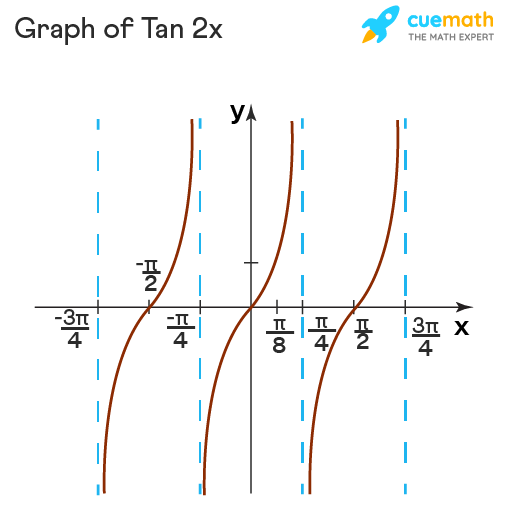



Tan 2x Formula What Is Tan 2x Formula Examples




Trig Identity Tan X 1 Tan 2 X Sec X Cos X Csc X Sin X Proved From Both Sides Youtube
Given, secxsec 2x=1 ⇒secx=1−sec 2x=tan 2x ⇒sec 2x=tan 4x ⇒1tan 2x=tan 4x (1tan 2x) 2=(tan 4x) 2 1tan 4x2tan 2x=tan 8x ∴tan 8x−tanNow, dy/dx=tanx^cotxcosec^2x(1log tan x) Graph of sec x At first, the numbers are going to intersect at 1 minus 1 and back up at 1 again Next we have asymptotes and 90 degrees, 270 degrees, because we cant have 1 over 0 Then the graph is going to fit around doing the opposite of decimal So, 1 over this decimal between 0 and 90 is gonnaClick here👆to get an answer to your question ️ Let y = tan ^1 (secxtanx) Then, dydx =



Solved K U 1 Differentiate The Following Choose 4 Only Marks A Y Tan 2x 1 Cot 2x B F X Xsin X 1 X C G X Sec Quot 6x Cos Course Hero




25 If 2 Tan2x 5 Sec X 1 O Has 7 Different Roots In Na Ne N Then Greatest Value Of N Is A 8 B 10 C 13 D 15
\sec(2x^{1}1)\tan(2x^{1}1)\frac{\mathrm{d}}{\mathrm{d}x}(2x^{1}1) The derivative of a polynomial is the sum of the derivatives of its terms Volume of revolution of the area between \sec(x1) and \ln(x) for 1 \leq x \leq 2 it should be the integral from 1 to 2 of \pi(\sec^2(x1)\ln^2 x) (The Shell Method was also incorrectly set upTan^2xsecx=1 Answer by lwsshak3 () ( Show Source ) You can put this solution on YOUR website!(sec x 1)(sec x 1) = tan^2 x
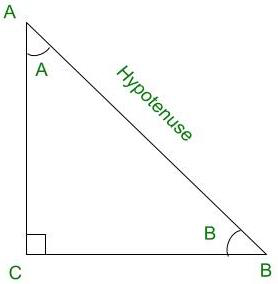



Find Sin2x Cos2x And Tan2x From The Given Information Cosec X 6 And Tan X 0 Geeksforgeeks
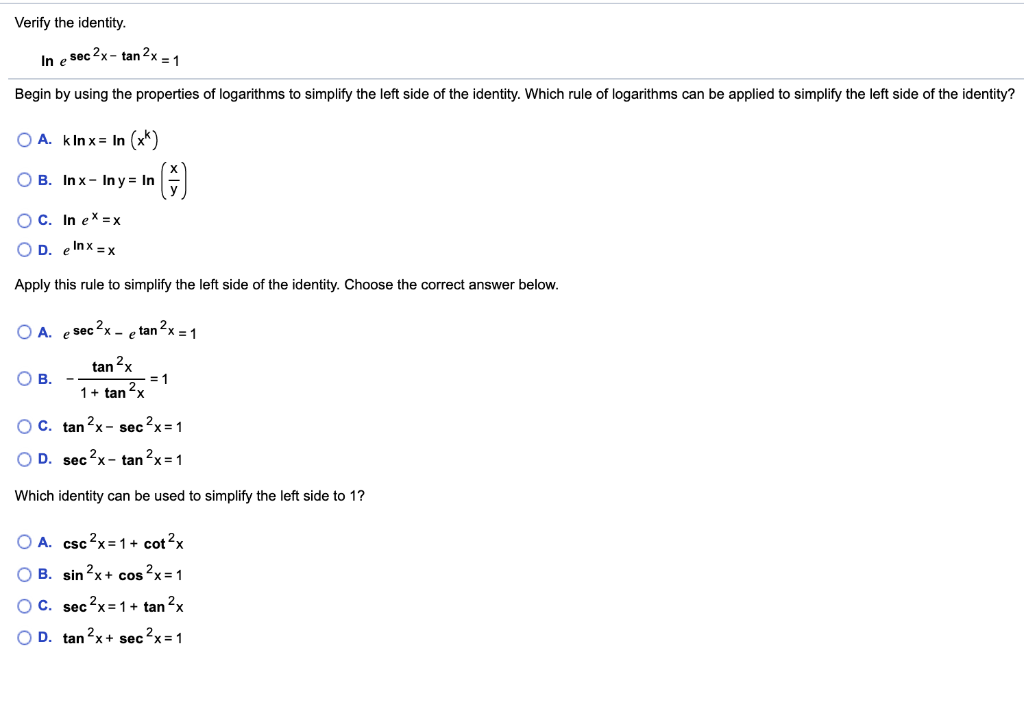



Solved Verify The Identity In Esec 2x Tan 2x 1 Begin By Chegg Com
What is a simplified form of the expression sec^2x1/(sinx)(secx)?Simplify tan^2(x)/(1 sec x) using trig identitiesThe first derivative of the trigonometric function of tangent with respect to its argument is the reciprocal of the trigonometric function of cosine squared Snarf!
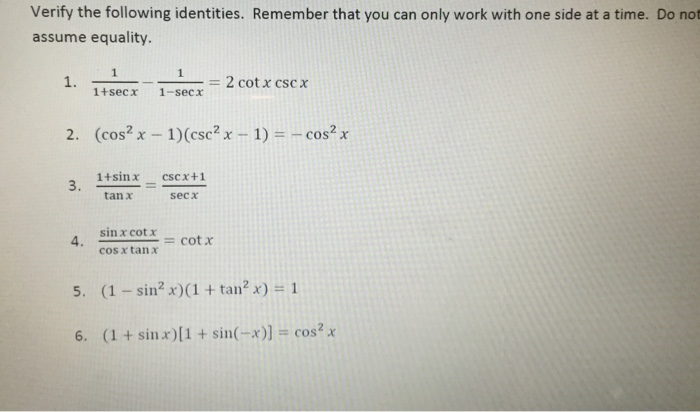



Solved Verify The Following Identities Remember That You Chegg Com




1 Sin X2 Exercise 7 1 Ind The Derivative Of Following Functions W R X Tan 2x
Rewrite sec(x) sec ( x) in terms of sines and cosines Rewrite tan(x) tan ( x) in terms of sines and cosines Multiply by the reciprocal of the fraction to divide by 1 cos(x) 1 cos ( x) Write cos(x) cos ( x) as a fraction with denominator 1 1 Cancel the common factor of cos(x) cos ( x)Answer (1 of 5) \begin{align*} \frac{1}{\sec(x)\tan(x)} &= \sec(x)\tan(x) \\ &= \frac{1}{\cos(x)}\frac{\sin(x)}{\cos(x)} \\ &= \frac{1\sin(x)}{\cos(xCalculus 12th grade (double check my work please) 2 given the curve is described by the equation r=3cos ¥è, find the angle that the




2 2 Graphs Of Other Trigonometric Functions Copyright



1
If cosecx – sinx = a^3, secx – cosx = b^3, then prove that a^2 b^2 (a^2 b^2) = 1 asked Jun 3 in Trigonometry by Eeshta01 ( 304k points) trigonometric functionsExpress tan x 1 sec x 1 sec x tan x in terms involving only csc Express in simplest possible form Ans _____ 3 Find all solutions for x which 0 ≤ x < 360 and 2csc 2 x − 3cot x − 7 = 0 Find angles to the nearest minute Ans _____ 2 Trigonometric Equations and Identities March 1997 1Free trigonometry calculator calculate trignometric equations, prove identities and evaluate functions stepbystep




Verifying A Trigonometric Identity Tan 2 X 1 Sec X Sec X Youtube



1
View 503 assssmentdocx from ENC 1102 at Indian River State College 503 assessment cot x sec4x = cot x 2 tan x tan3x cot x (1 tan^2 x) (1 tan^2 x) =cot xEx 34, 8 Find the general solution of the equation sec2 2x = 1 – tan 2x sec2 2x = 1 – tan 2x 1 tan2 2x = 1 – tan2x tan2 2x tan2x = 1 – 1 tan2 2x tan2x = 0 tan 2x (tan2x 1) = 0 Hence We know that sec2 x = 1 tan2 x So, sec2 2x = 1 tan2 2x tan 2x = 0 taGet an answer for '(1tanx )^2 (1cotx )^2 = (secxcosecx)^2' and find homework help for other Math questions at eNotes
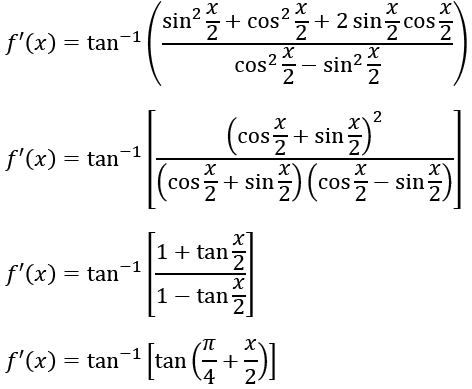



If F X Tan 1 Sec X Tan X P 2 Lt X Lt P 2 And F 0 0 Then F 1 Is Equal To




1 Cosx 1 Cosx Tan 2x Secx 1 2prove Brainly In
Trigonometric identity with Pythagorean identitiesSec2(x) −1 sec 2 ( x) 1 Apply pythagorean identity tan2(x) tan 2 ( x) Because the two sides have been shown to be equivalent, the equation is an identity (sec(x)1)(sec(x)−1) = tan2 (x) ( sec ( x) 1) ( sec ( x) 1) = tan 2 ( x) is an identityAnswer (1 of 2) sec^2(2x) = 1 tan (2x) 1 tan^2(2x) = 1 tan(2x) tan^2 (2x) tan (2x) = 0 tan(2x) tan (2x) 1 = 0 either tan (2x) = 0 = tan (0°) 2x = npi




2 Cot 4x 2 Tan X Sec X X2 Cos 2x 1 Sin X Cos X Tan 4 3x Cos 2x F X X Cos X 2 Acirc Euro Rdquo Cos Pdf Document
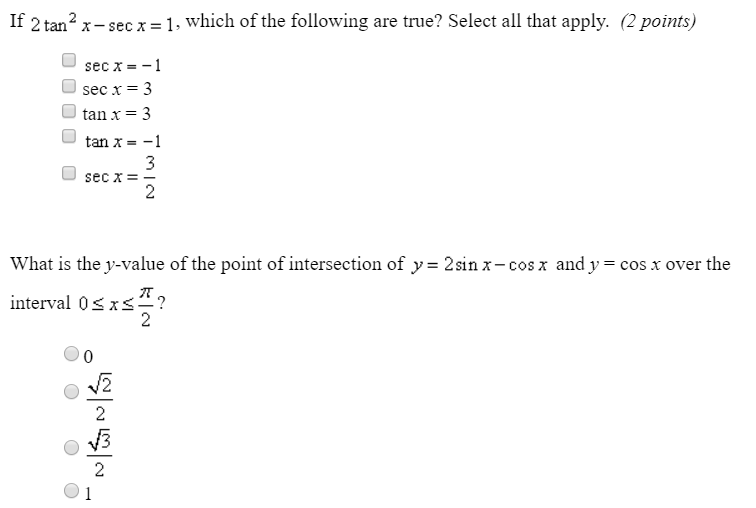



Solved If 2 Tan2x Secx 1 Which Of The Following Are True Chegg Com
About Press Copyright Contact us Creators Advertise Developers Terms Privacy Policy & Safety How works Test new features Press Copyright Contact us CreatorsView Tingyao Li's profile on LinkedIn, the world's largest professional community Tingyao has 3 jobs listed on their profile See the complete profile on LinkedIn and discover Tingyao'sAnswer (1 of 3) y = tan^1(sec x tan x) => tan y = sec x tan x Differentiating both sides wrt x sec^2 y * dy/dx = sec x * tan x sec^2 x => dy/dx = sec x



2 Secx 1 Secx 1 Br Answer
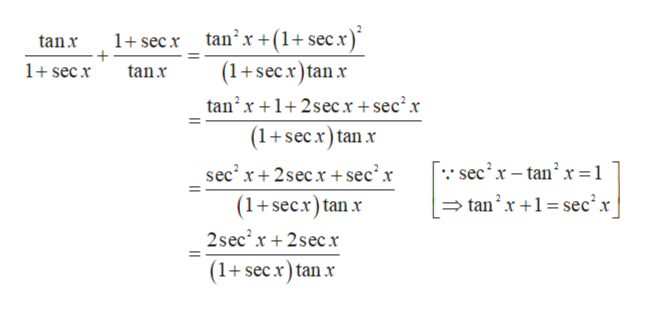



Answered Tanx 1 Secx 1 Secx Tanx 2cscx Bartleby
HOC 15 No overseeding Bunkers 59 Machine raked with Toro Sand Pro with brushes and handrake perimeters Native/Waste areas 5 acres of mulched waste areas planted with fakahatchee, muhly and cord grasses We have stockpiled our own mulch from chipping up the hurricanedamaged trees Waterways 30 acres Most of the lakes and ponds areCscX = 1 / sinX sinX = 1 / cscX secX = 1 / cosX cosX = 1 / secX tanX = 1 / cotX cotX = 1 / tanX tanX = sinX / cosX cotX = cosX / sinX Pythagorean Identities sin 2 X cos 2 X = 1 1 tan 2 X = sec 2 X 1 cot 2 X = csc 2 X Negative Angle IdentitiesGet an answer for 'solve tan^2xsecx =1 in the range 0°≤x≤ 360°' and find homework help for other Math questions at eNotes




Dopl3r Com Memes 3 Sec2x 1 Cos 2 X Tan 2x Tan X Esus The An Is Always 5
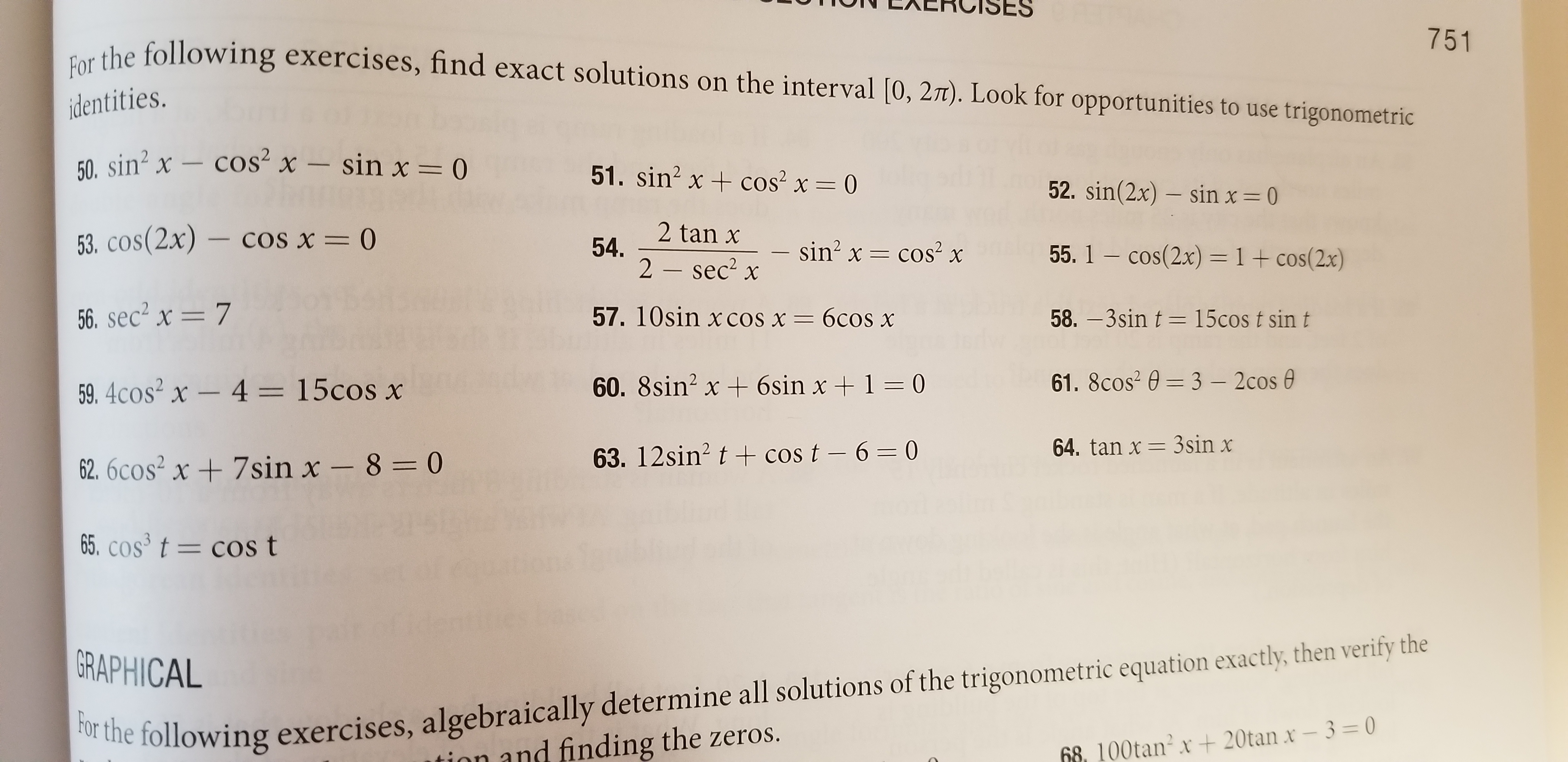



Cos2xu003dcosx
1tan^2x d/dx sinx cosx d/dx cosxsinx d/dx tanx sec^2x d/dx cotxcsc^2x d/dx cscxcscxcotx d/dx secx secxtanx 1 sin^2x cos^2x Recommended textbook explanations Sullivan Trigonometry 6th Edition Sullivan 2,768 explanations Trigonometry 5th Edition Sullivan 1,647 explanations Trigonometry A Unit Circle Approach∫ d x cos 2 x = tan x C 2 and by combining the two constants of integration into one, we find the answer (1) ∫ ( 1 tan x) 2 d x = tan x − 2 log cosRewrite sec(x) sec ( x) in terms of sines and cosines Rewrite tan(x) tan ( x) in terms of sines and cosines Multiply by the reciprocal of the fraction to divide by 1 cos(x) 1 cos ( x) Write cos(x) cos ( x) as a fraction with denominator 1 1 Cancel the common factor of cos(x) cos ( x)
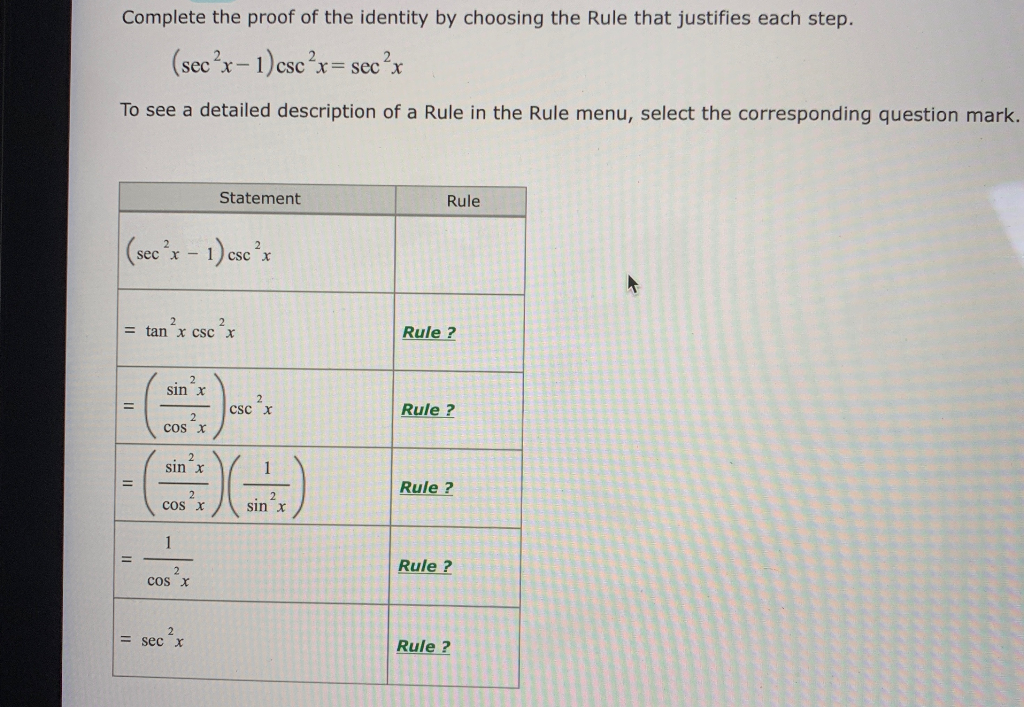



Fastest Is Tan 2x Cot 2x 1 An Identity



2
To ask Unlimited Maths doubts download Doubtnut from https//googl/9WZjCW `(1cosx)/(1cosx)=tan^2x/(secx1)^2`Solve your math problems using our free math solver with stepbystep solutions Our math solver supports basic math, prealgebra, algebra, trigonometry, calculus and moreProve the following trig identities a Prove tan 4x 2 tan 2x 仁sec 4x Hint Use the fact that tan 4x 2 tan 3x 1 (tan 2x 1) 2 b Prove 1 /(1cos x)11 , (1cos x) = 2 csc 2x Hint Add;X) / 1 (sin²Trigonometry Formulas As a lot of the Earth's natural structures resemble triangles, Trigonometry is a very important part of Mathematics during high schoolIt is used across different areas of work such as
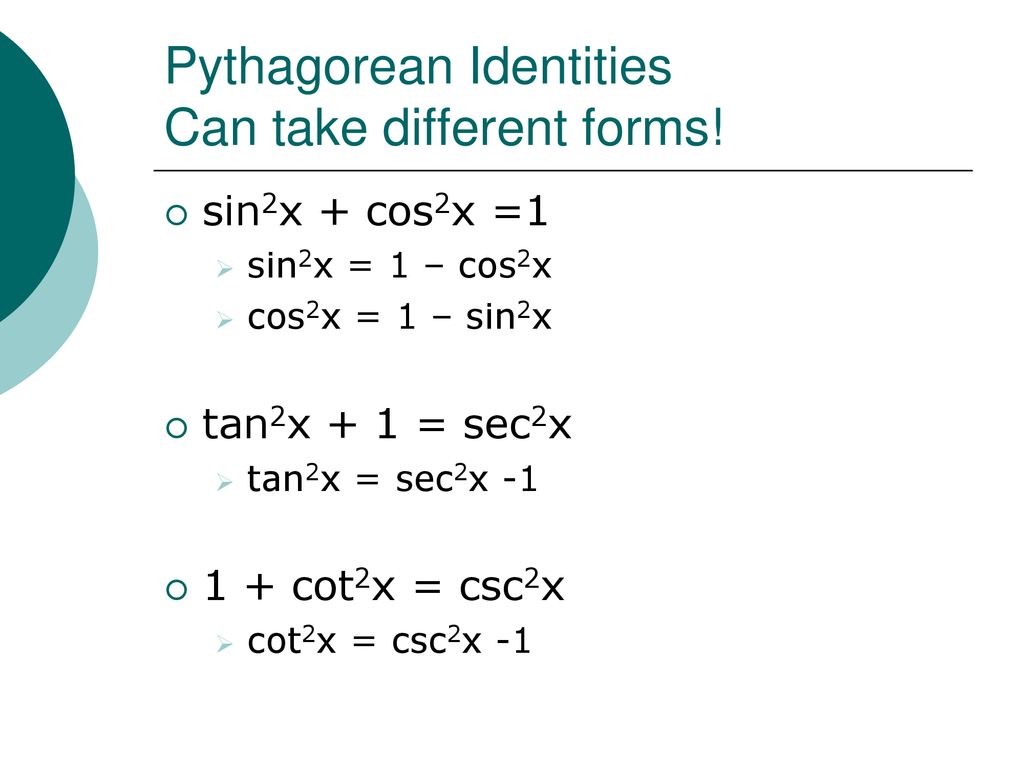



Weekly Plan Monday 1 27 14 Tuesday 1 28 14 Wednesday Group Work Ppt Download



1 Tan 2x Sec 2x
Answered 2 years ago Author has 18K answers and 15M answer views JLet I=integ (1secx)^1/2 dx =integ (sec^2x1)^1/2/ (secx1)^1/2 =integ tanx/ (secx1)^1/2 Let secx1=u^2, or secxtanx dx=2udu, dx=2udu/ (u^21)tanx or, I=integ tanx2u du/tanx (u^21)u or,See below Use Property sec^2x=tan^2x1 Left Side=tan^2x/secx =(sec^2x1)/secx =sec^2x/secx 1/secx =secxcosx =Right Side Trigonometry ScienceIf tan^2xsecxa=0 has atleast one solution > 11th > Applied Mathematics > Limits and Continuity > Methods of evaluating limit of a function



If Tan X T Then Tan 2x Sec 2x Is Equal To A 1 T 1 T Sarthaks Econnect Largest Online Education Community




Sin X 2 Tan X 2 1 Tan 2 X 2 Eraoco
Tan^2 x sec x=1 We know that tan=sin/cos and sec= 1/cos sec x = 1/cos x and (tan x)^2 = (sinx/cosx)^2 From the fundamental formula of trigonometry, (sin x)^2 = 1(cos x)^2 (sinx/cosx)^2 = (1(cos x)^2)/(cos x)^2 The expression will become (1(cos x)^2)/(cos x)^2 1/cos x = 1



What Is The Integration Of Tan 2x Solution Quora



What Is The Integral Of Tanx Sec 2x 1 Tan 2x Quora



Bestmaths Online Proof 4




Circular Function Ii English Pdf Trigonometric Functions Equations



2




Ex 3 4 8 Find General Solution Of Sec 2 2x 1 Tan 2x Teachoo




Math And Physics Solution Don T Just Like Posts Please Like And Follow Our Page Maths Statistics Physics Chemistry Forummaths Statistics Physics Chemistry Forummaths Statistics Physics Chemistry Forummm



Differentiate Tan 1 Sec X Tan X P 2 X P 2 W R T X Studyrankersonline




Tan 2x 1 E 2 Prove Secx Tan 3xcosecx 2 E 2 3 2 Brainly In




3 Sec 2x1 Cos 2x Tan 2x Tan X Esus Is Always The Anse Ja Irl Meme On Me Me




For N In N Let F N X Tan X 2 1 Sec X 1 Sec 2
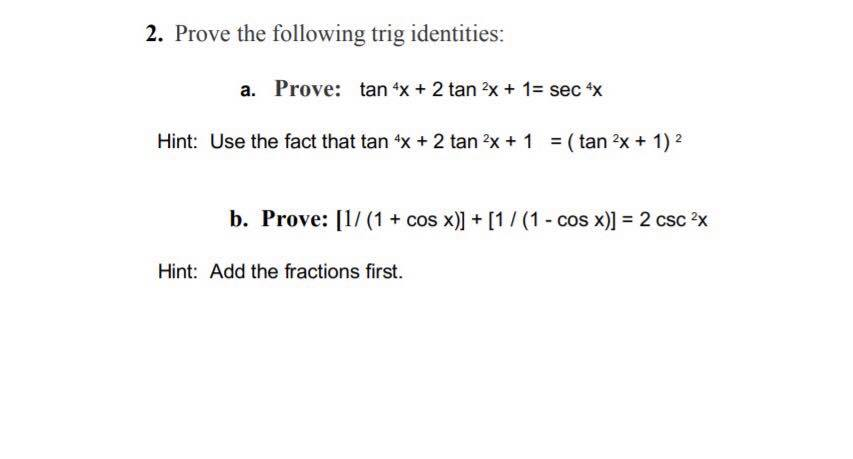



Tan2x ただの悪魔の画像
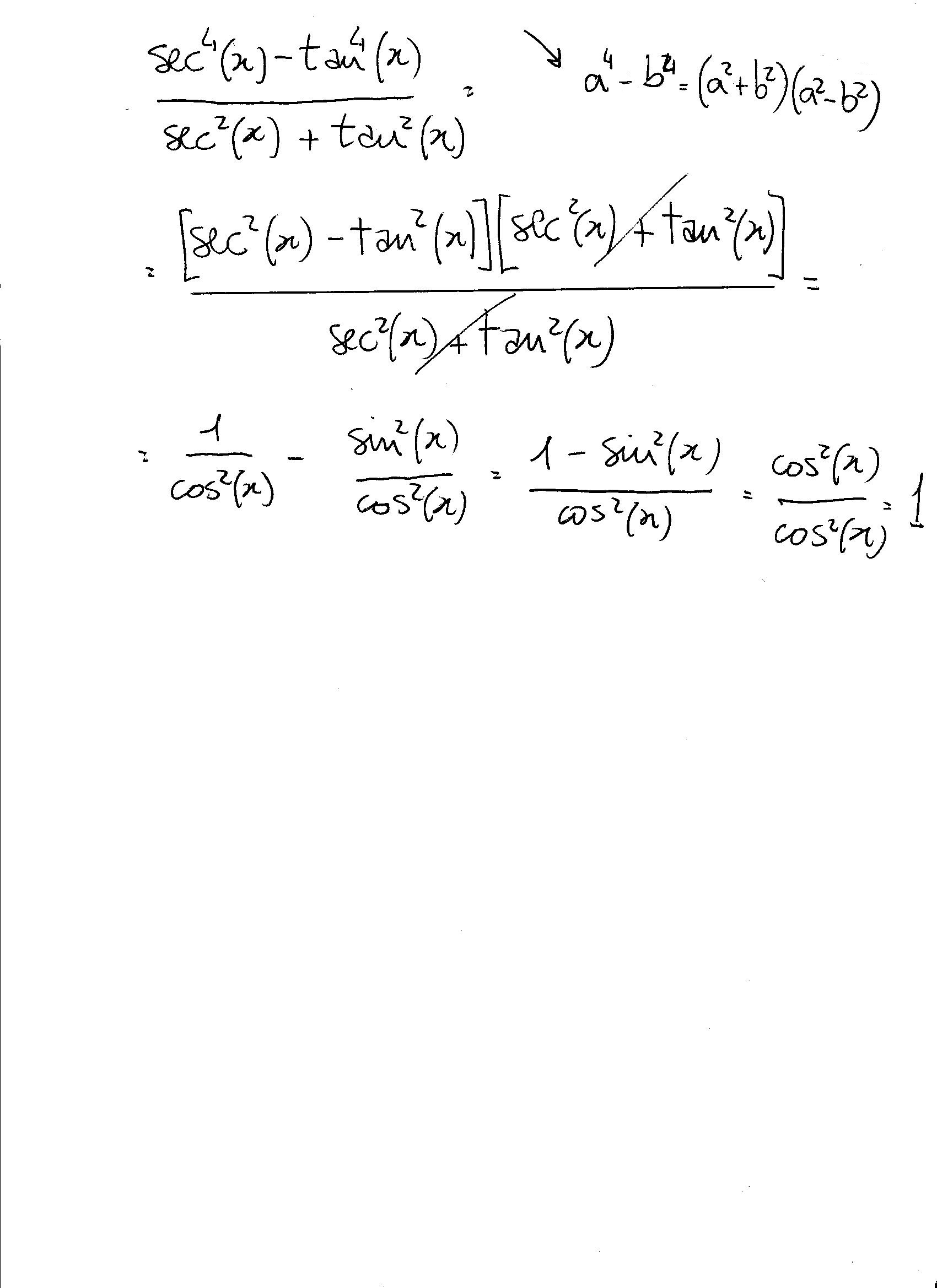



How Do You Simplify Sec 4x Tan 4x Sec 2x Tan 2x Socratic




Misc 8 Tan X 4 3 Find Sin X 2 Cos X 2 And Tan X 2




1 Tan 2x Sec X 0 Gauthmath
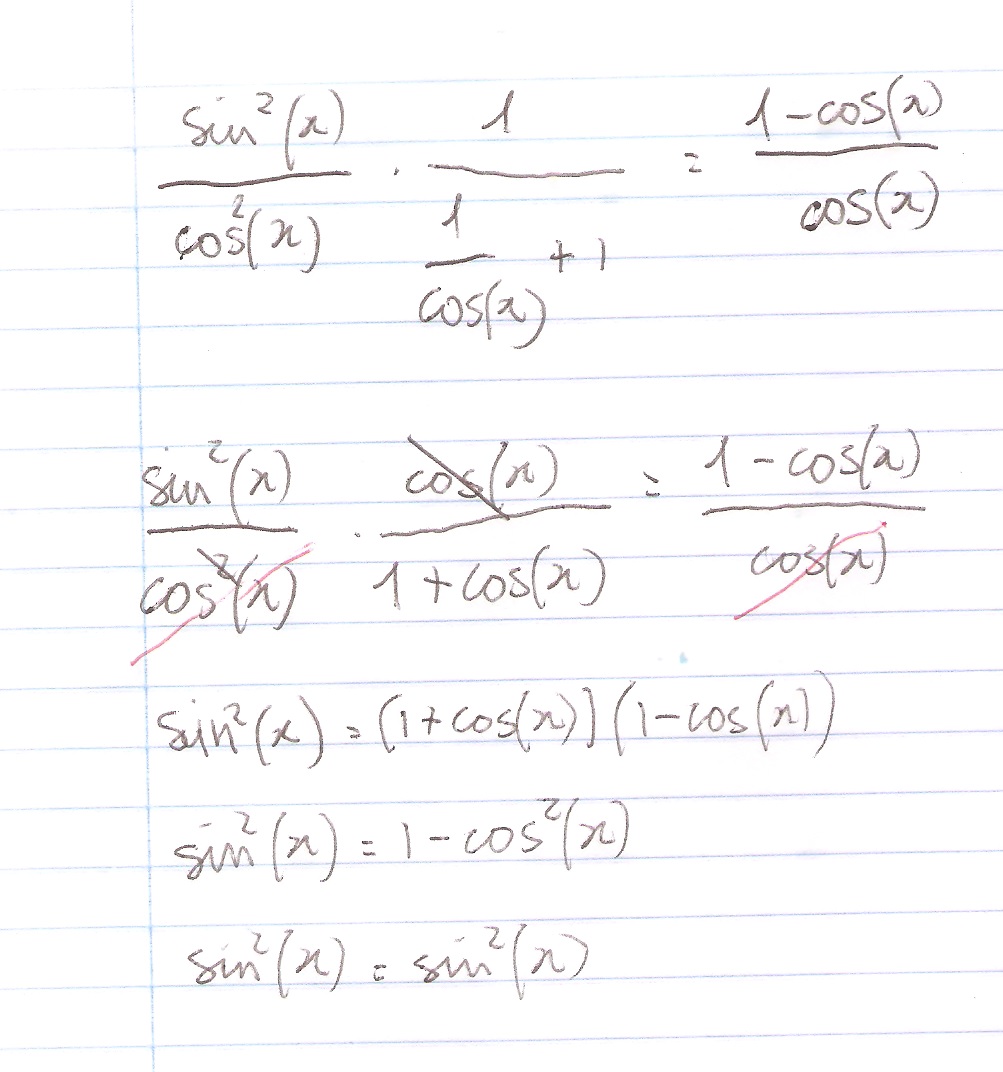



How Do You Prove The Identity Tan 2x Secx 1 1 Cosx Cosx Socratic
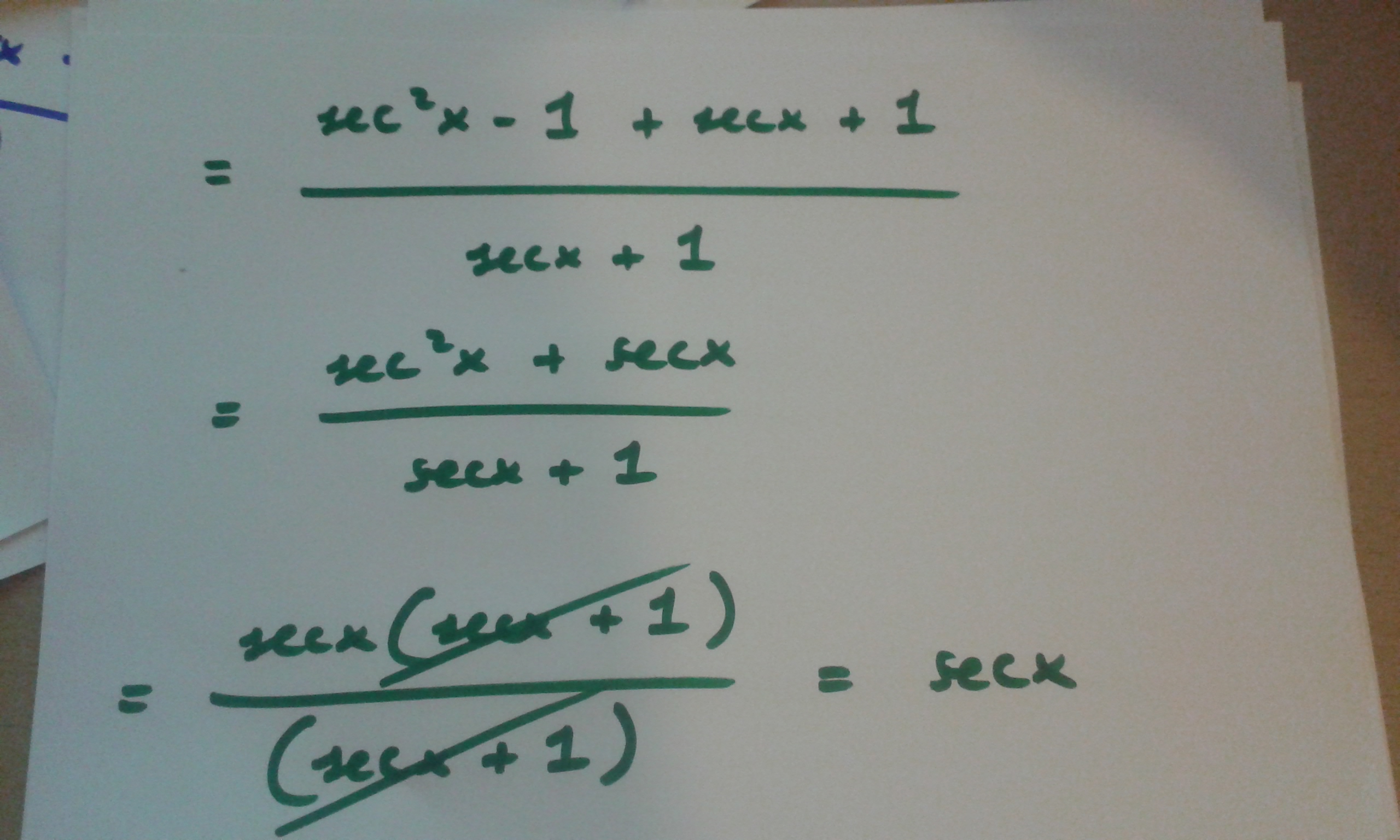



How Do You Prove Tan 2x Secx 1 1 Secx Socratic



bestpictjcry Tan 2x Tan 2x
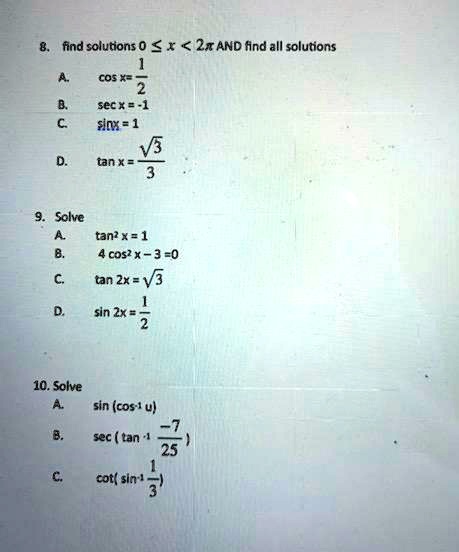



Solved Find Solutions 0 R 2x And Find All Solutions Cos Sec 1 Snx 1 J Tn Solve Tan 1 4 Cos X 3 0 An 2x V5




The Integral Int Sec 2x Secx Tanx 9 2 Dx Equals For Some Arbitrary Constant K Dot 1 Secx Tanx 11 2 1 11 1 7 Secx Tanx 2 K 1 Secx Tanx 1 11 1 11 1 7 Secx Tanx 2 K 1 Secx Tanx 11 2 1 11 1 7 Secx Tanx 2 K 1




Show That The Following Are Not Trigonometric Identities 1 Tan 2x 2tan X 2 Sec X Sqrt 1 Tan 2 X 3 Sin X Y Sin X Sin Y Study Com



For N Belong To N Fn X Tan X 2 1 Sec X 1 Sec 2x 1 Sec4x 1 Sec 2 N X Then Lim Fn X 2x Is Equal To




I M Seriously Confused About This Trigonometry Problem Askmath




Pre Calc W Up 2 16 2 Simplify Cos2 X Tan2 X Cos2x Ppt Download




Integrate Sec 2x Method 1



Solve Sec 22x 1 Tan2x Sarthaks Econnect Largest Online Education Community




Sat Math Flashcards Quizlet




1 Simplify Tan X Sec X 1 Tan X Secx 1 2 Prove That Cos6x 32cos 6 X 48cos 4 X 18cos 2 X 1 3 Pi 180 Degrees If Tan X 3 4 Pi Mathematics Topperlearning Com Drrlj0qq



How To Simplify Math Frac Tan 2x 1 Sec X Math Quora



What Is The General Solution Of X For Tan X Tan2x 1 Quora




Secx Cosx Cscx Sinx Tanx 1 Tan 2x Trigonometric Identity 2mvi 0934 Youtube




Fastest Prove The Identity Tan X Sin 2x 1 Cos 2x



Dx Sec 2x Tan 2x Is Equal To A 2tan 1 2tanx X C Sarthaks Econnect Largest Online Education Community



2
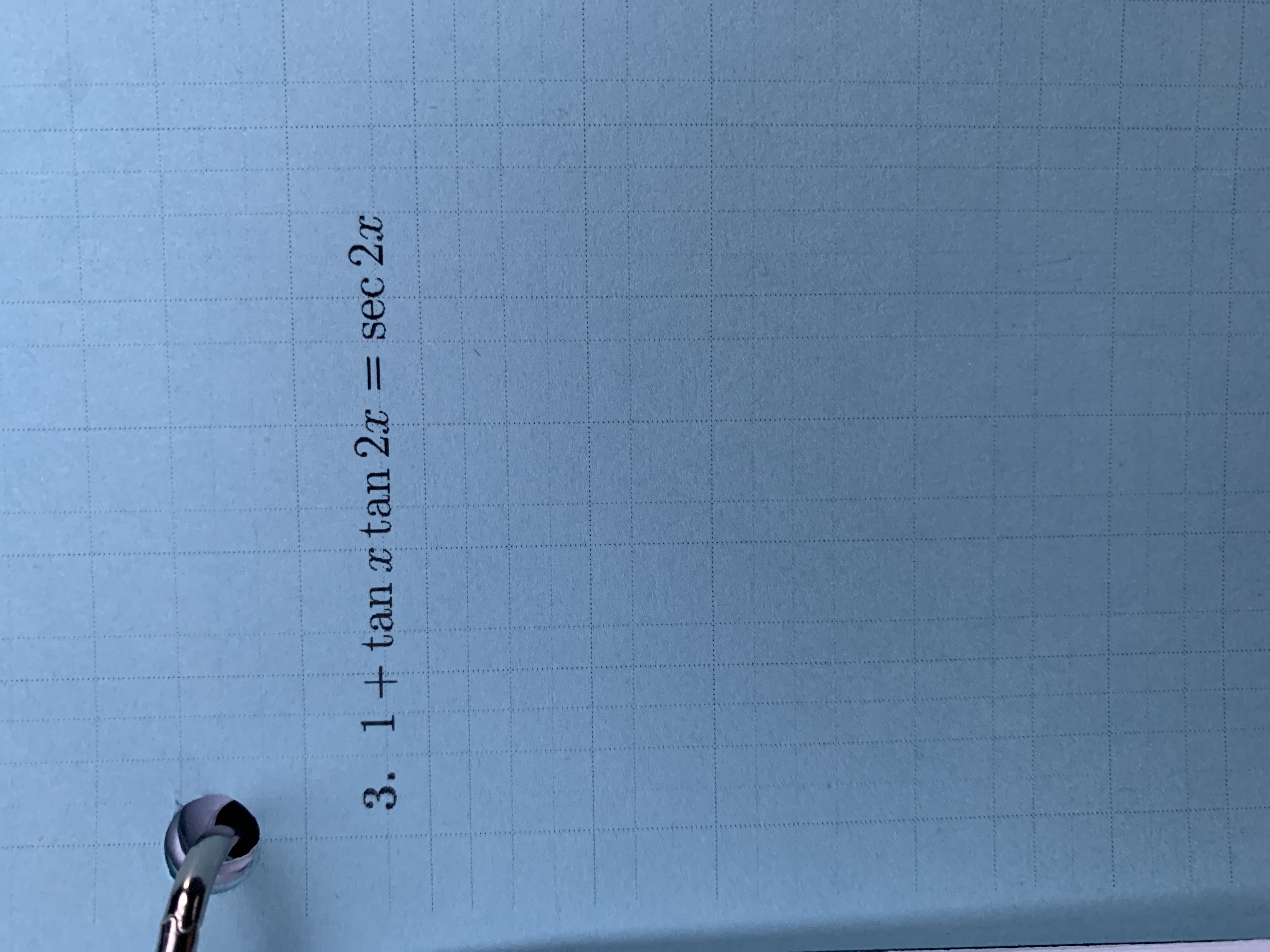



Answered 3 1 Tanx Tan 2x Sec 2x S Bartleby



Solved Determine Exact Value Of Tan 2x Sin2x And Cos2x If Cscx 17 15 And X 3 2 Course Hero




The Young Math Analysis 101 I D 3 Unit Q Pythagorean Identities
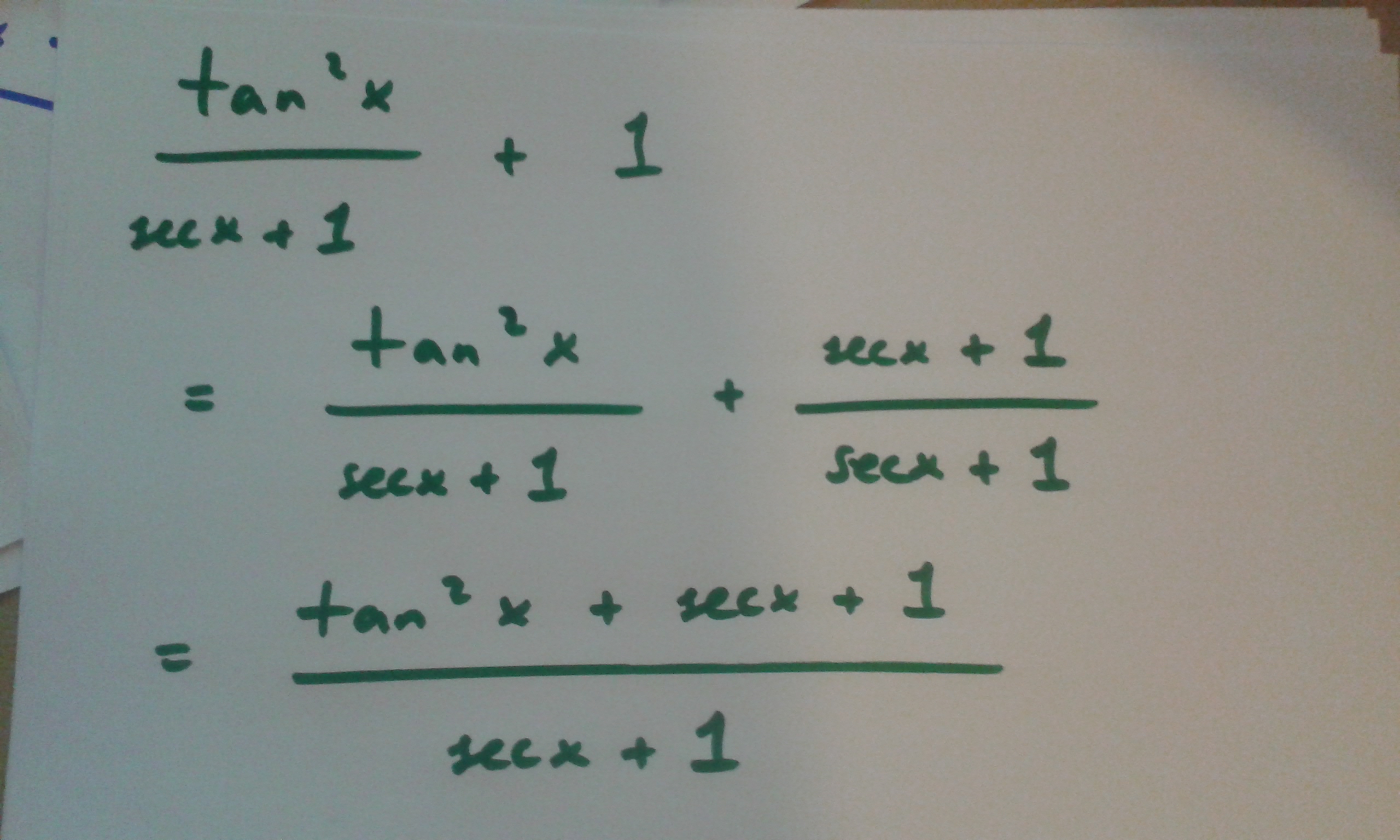



How Do You Prove Tan 2x Secx 1 1 Secx Socratic
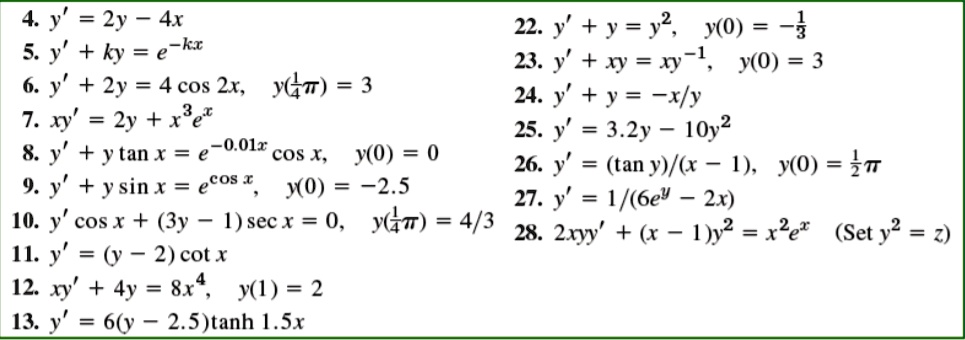



H3xveyf Bofo M



1



2
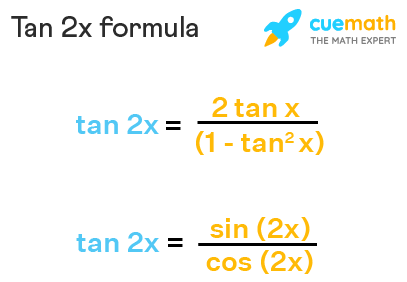



Tan 2x Formula What Is Tan 2x Formula Examples




7 4 Proving Trigonometric Identities In This Unit We Ll Be Using Some Formula S That Are Also Found And Used In Unit 7 2 And 7 3 Here We Ll Be Solving Problems To Show That Both Sides Of The Equation Equal Each Other These Formulas Will Help Solve Some Trig




Tan 2 X Sec X 1 Solve For X From 0 To 2pi Youtube




If 2tan 2 X Sec X 1 Which Of The Following Are True Select All T




Solve 8 Tan Square X 2 1 Sec X




Solved Verify The Identity Cos X Cos X Tan 2x Sec X Chegg Com




Sec X 1 Sec X 1 Tan 2 X Youtube




Cos2x Sin2x 1 1 Tan2x Sec2x Cot2x 1 Csc2x Cofunction




Ex 3 4 8 Find General Solution Of Sec 2 2x 1 Tan 2x Teachoo
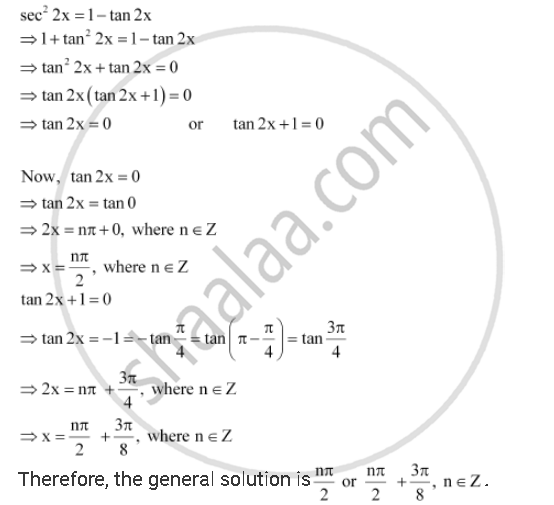



Tan2x 1 ただの悪魔の画像



いろいろ Tan2x 1sec2x ただの悪魔の画像



Is This Correct Because My Book Says The Answer Is Tan 2x Sec 2x Secx Calculus
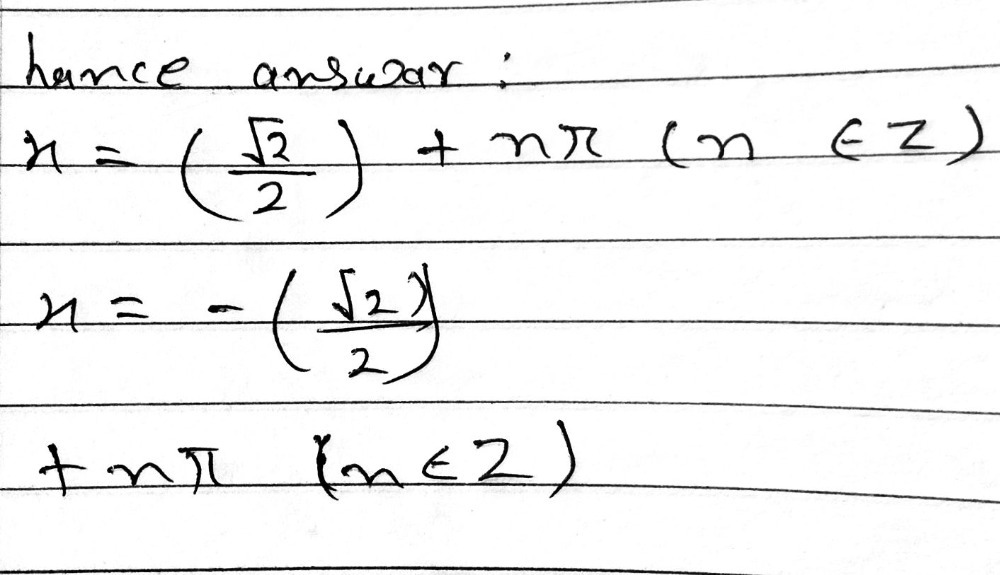



17 Find Sec X If Tan 2x 1 2 Gauthmath
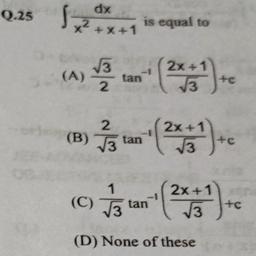



17 2 Tan X Tan X Sec X 2 Dx Tt Where Re 0 1 Log Math




The Integral Int Sec 2x Secx Tanx 9 2 Dx Equals For Some Arbitrary Constant K Dot 1 Secx Tanx 11 2 1 11 1 7 Secx Tanx 2 K 1 Secx Tanx 1 11 1 11 1 7 Secx Tanx 2 K 1 Secx Tanx 11 2 1 11 1 7 Secx Tanx 2 K 1
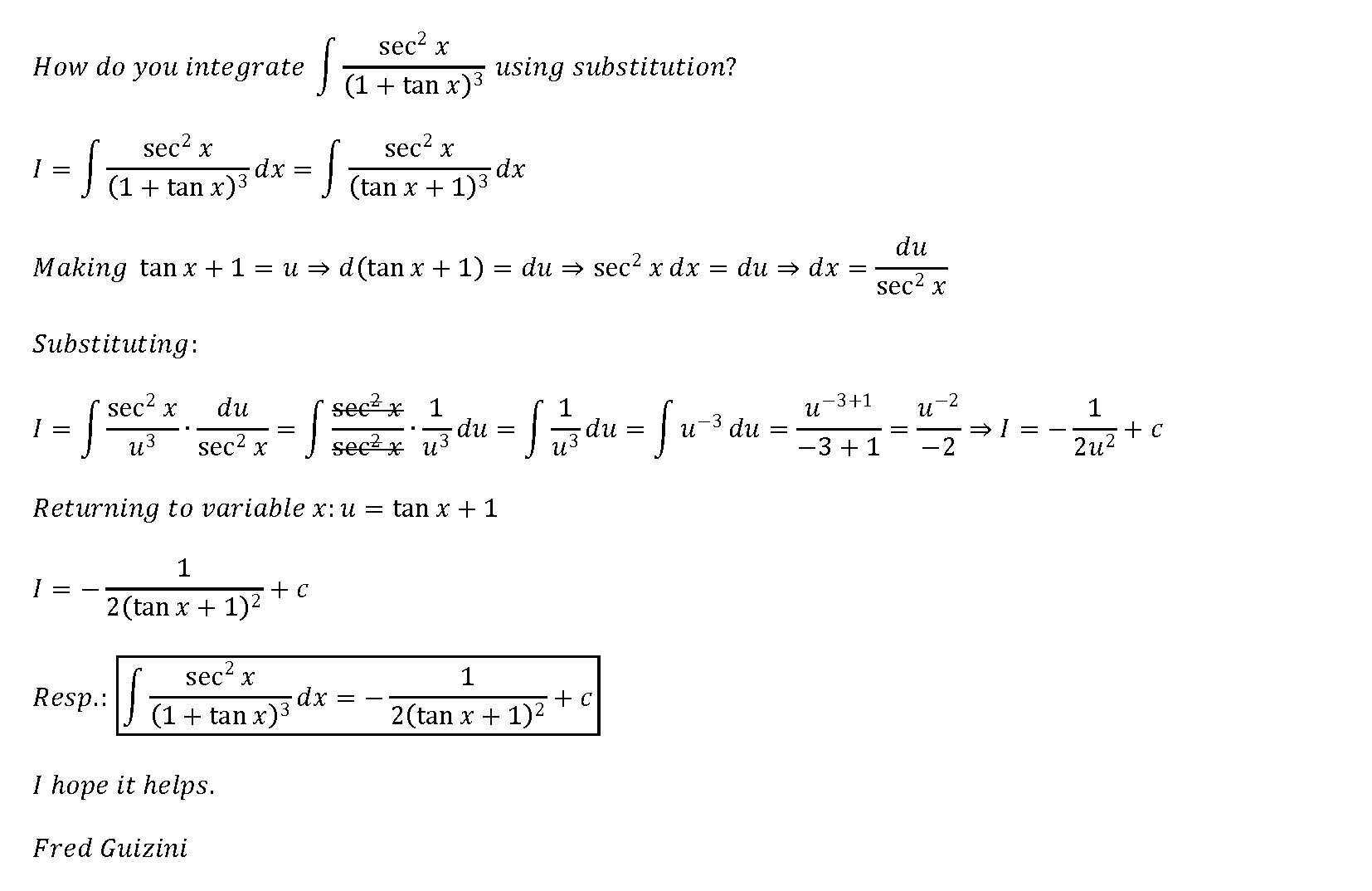



How Do You Integrate Int Sec 2x 1 Tanx 3 Using Substitution Socratic




Sec 2x1 Cos2 X Tan 2x Tantx 3 Esus Is Always The Ans イais 1 0 Studentlifeproblems If You Are A Student Follow Tumblr Meme On Me Me



Cos2x Identity




Ex 3 4 8 Find General Solution Of Sec 2 2x 1 Tan 2x Teachoo



2




Ppt Gmo 256 Things To Remember Powerpoint Presentation Free Download Id
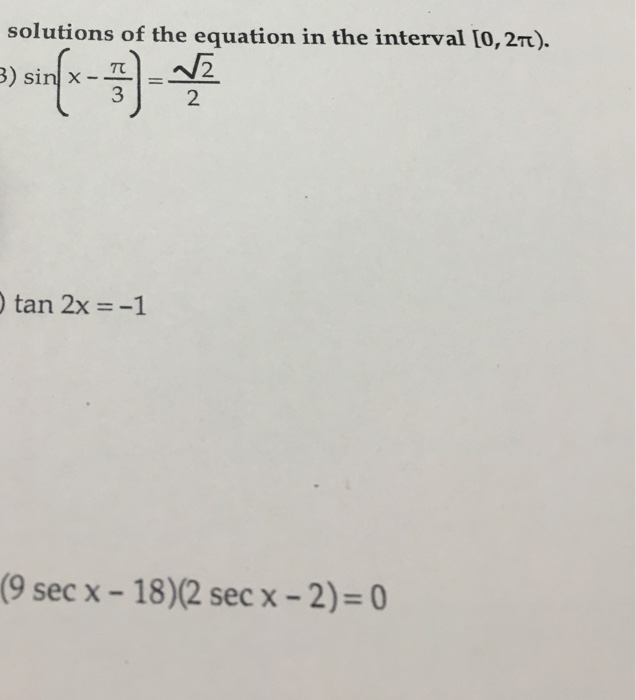



Solved Solution Of The Equation In The Interval 0 2 Pi Chegg Com




Int Tan 2x Secx 1 Dx Youtube



Prove That Tan2x 1 Sec2x Tanx Sarthaks Econnect Largest Online Education Community
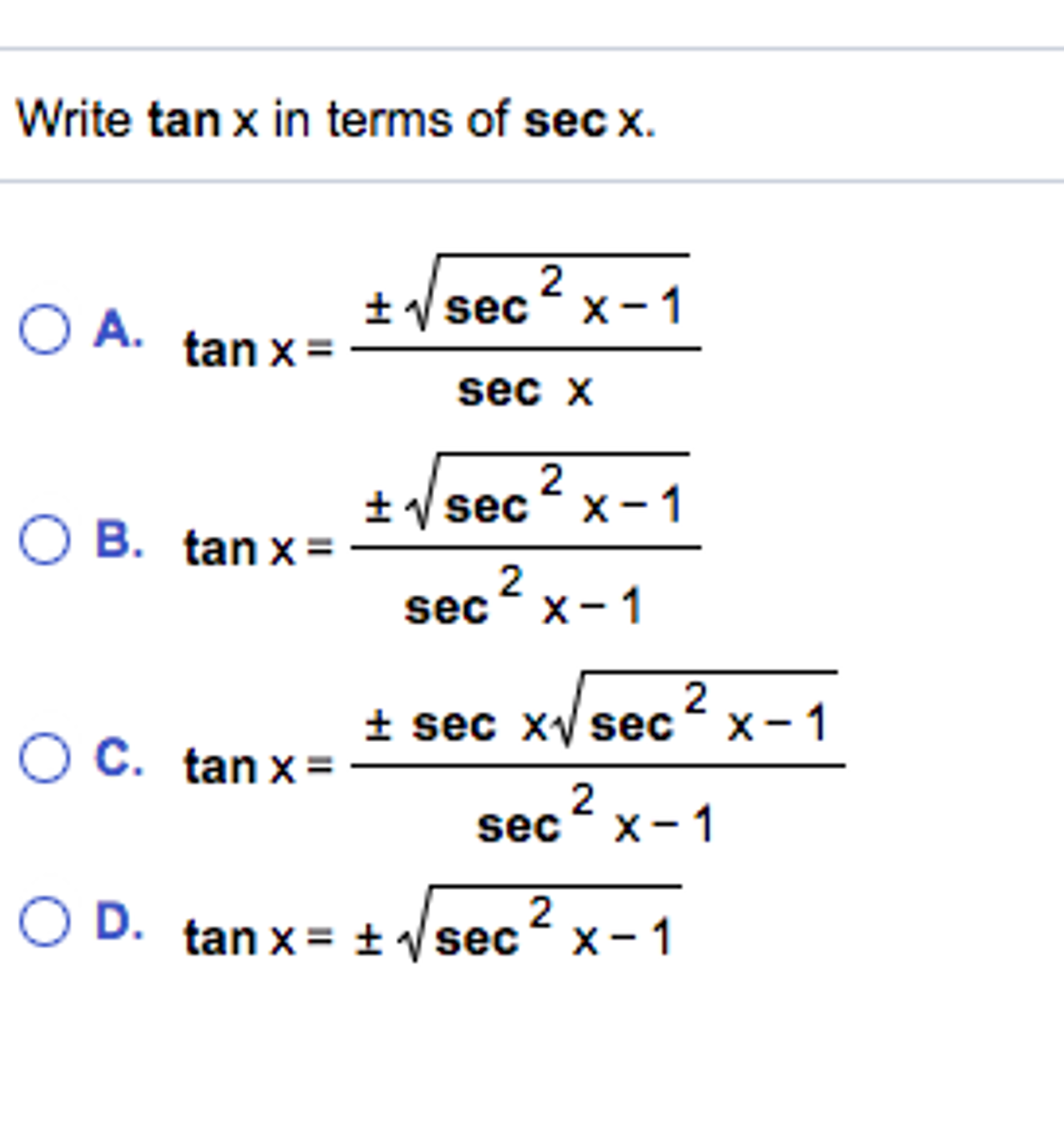



Solved Write Tan X In Terms Of Sec X Tan X Plusminus Chegg Com




Limit Trigonometric Function 2 Sec 2x 1 Tan X Youtube




How Do You Prove The Identity Tan 2x Secx 1 1 Cosx Cosx Homeworklib




How To Find The Inverse Of A Trig Function Dummies



Solution Tan 2x Secx 1 1 Cosx Cosx Please And Thank You
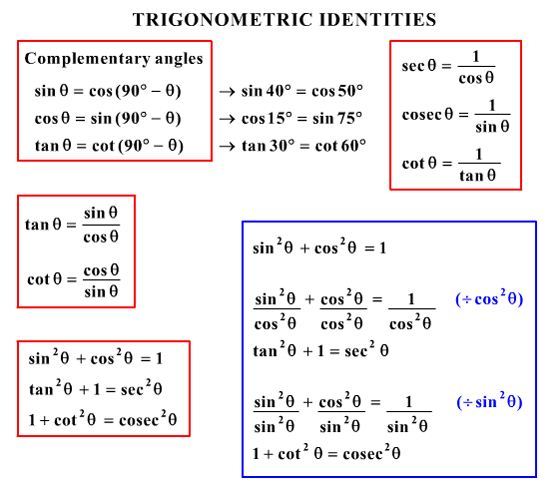



What Would Be Steps In Proving That Tan2x Secx 1 1 Sec X Socratic
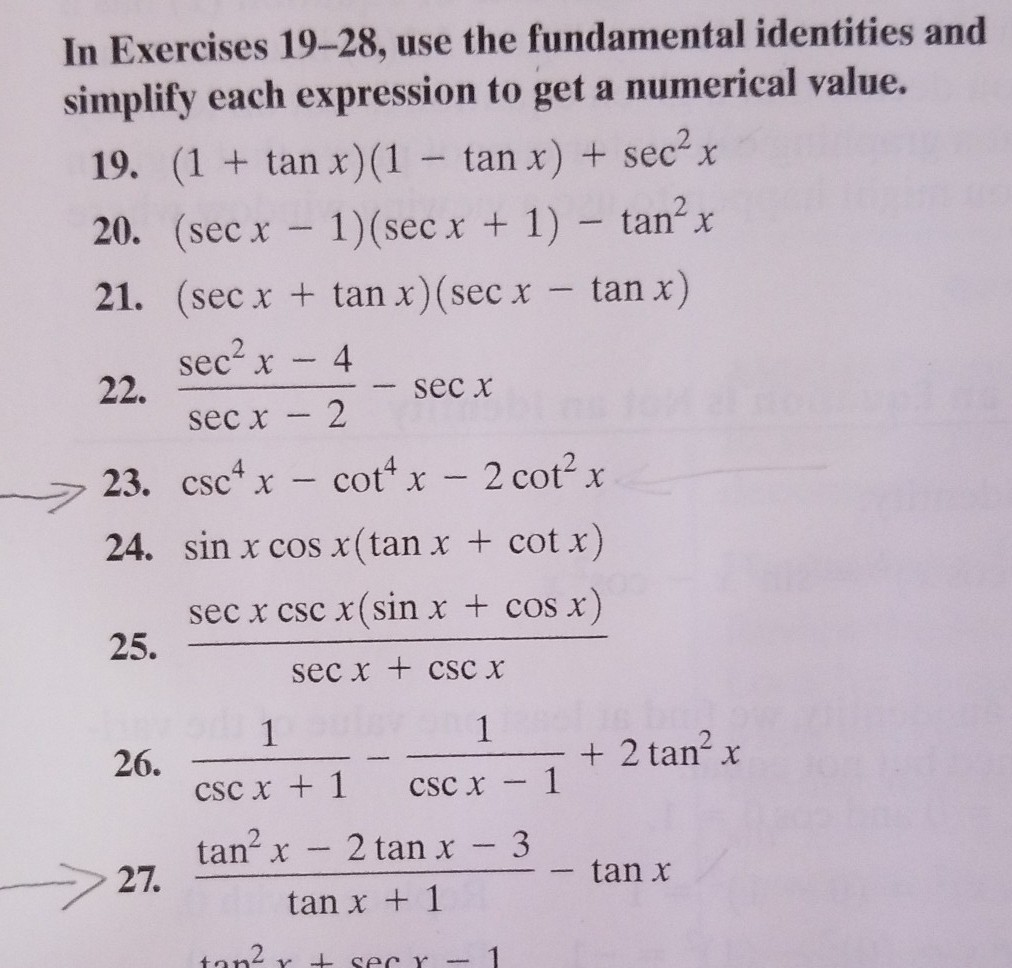



Solved In Exercises 19 28 Use The Fundamental Identities Chegg Com




Trigonometry Identity Tan 2 X 1 Sec 2 X Youtube




How Do You Prove Tan 2x Secx 1 1 Secx Socratic
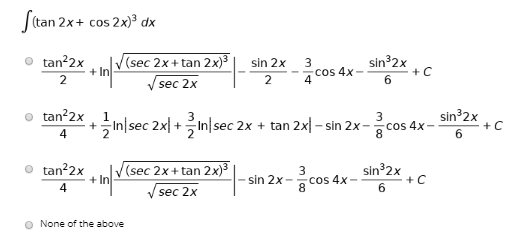



Answered Stan 2x Cos 2x Dx Tan 2x 2 V Sec 2x Bartleby




Dx 2 Va X Exercise 7 C Differentiate The Following Functions With Respect To X 1



0 件のコメント:
コメントを投稿